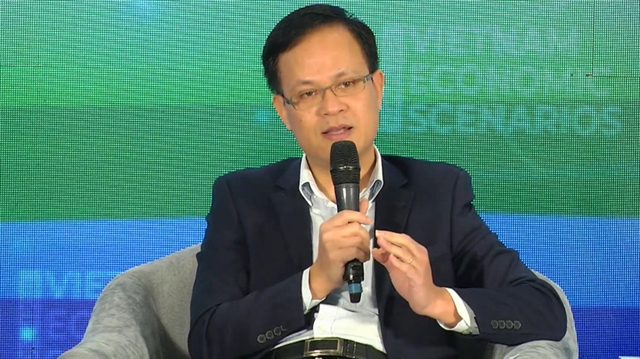If credit institutions maintain healthy mobilisation and growth, and direct capital to priority sectors, credit growth is expected to reach 19–20 per cent by the end of 2025. This represents one of the highest credit growth rates in the past decade.

Bank credit is expected to play a crucial role in driving economic growth in the remaining months of 2025, helping Việt Nam achieve its ambitious GDP growth target of 8.3–8.5 per cent this year.
Phạm Chí Quang, Director of the State Bank of Vietnam (SBV)’s Monetary Policy Department, spoke with Việt Nam News about the SBV’s measures to boost lending while ensuring inflation remains under control and bad debts are minimised.
How has the banking industry reduced interest rates to promote credit growth this year?
In the first nine months of this year, the Vietnamese economy faced numerous difficulties and challenges both domestically and internationally, particularly two external shocks that created obstacles for businesses.
Amid these challenges, the Government and Prime Minister issued directives to sectors at all levels to support the economy. The State Bank of Vietnam (SBV) was tasked with two key areas: interest rates and credit.
Regarding interest rates, the banking system has made consistent efforts over nearly three years to reduce lending rates using multiple solutions. Recently, under the close and decisive guidance of the SBV Governor, the banking industry applied technology and digital transformation to cut costs, including operating and personnel expenses, creating a foundation for further reductions in lending interest rates. This represents significant effort by the banking sector and close coordination with the SBV.
In addition, credit institutions have actively participated in reducing interest rates through digital transformation.
Notably, the SBV has also injected liquidity into credit institutions, providing access to low-cost, stable, and balanced capital so banks can offer appropriate lending and reduce interest rates.
With the banking system’s combined efforts, I affirm that interest rates will continue to decline as credit institutions leverage digital solutions to reduce costs.
What solutions will the SBV take to continually promote credit to support the country in meeting the GDP growth target of 8.3–8.5 per cent in 2025?
Regarding credit management, the SBV set credit growth targets for commercial banks at the start of the year. Targets were later adjusted upwards, particularly for banks with strong credit ratings and the capacity to manage safe, sustainable credit growth, ensuring sufficient capital to supply the economy.
The SBV will continue to inject liquidity into credit institutions, creating favourable conditions for banks to offer appropriate lending and businesses to have access to cheap capital.
The credit structure will keep focusing on the production and business sector, especially priority sectors and economic growth drivers, according to the Government's policy.
With a current credit growth rate of over 13 per cent in the first nine months, if credit institutions maintain healthy mobilisation and growth, and direct capital to priority sectors, credit growth is expected to reach 19–20 per cent by the end of 2025, surpassing the target of 16 per cent. This represents one of the highest credit growth rates in the past decade.
The aim is to sustain high credit growth through the year to support the Government’s GDP target of over 8 per cent, while also ensuring double-digit annual growth rates in the coming years.
High credit growth rates often pose risks of inflation and rising bad debts. What will the SBV do to minimise consequences?
High credit growth supports economic expansion but also pressures debt quality and the risk of bad debts. The SBV has regularly issued guidance and worked directly with credit institutions to ensure credit flows remain high while maintaining quality and efficiency.
Going forward, the SBV will continue reviewing and directing credit institutions to consider credit provision carefully, balancing capital sources and prioritising sectors with lower risk to prevent future bad debts.
Inflation is closely monitored alongside growth. The SBV will continuously review and control credit to support economic expansion while maintaining macroeconomic stability, including keeping inflation in check. — BIZHUB/VNS
- Tags
- banking





